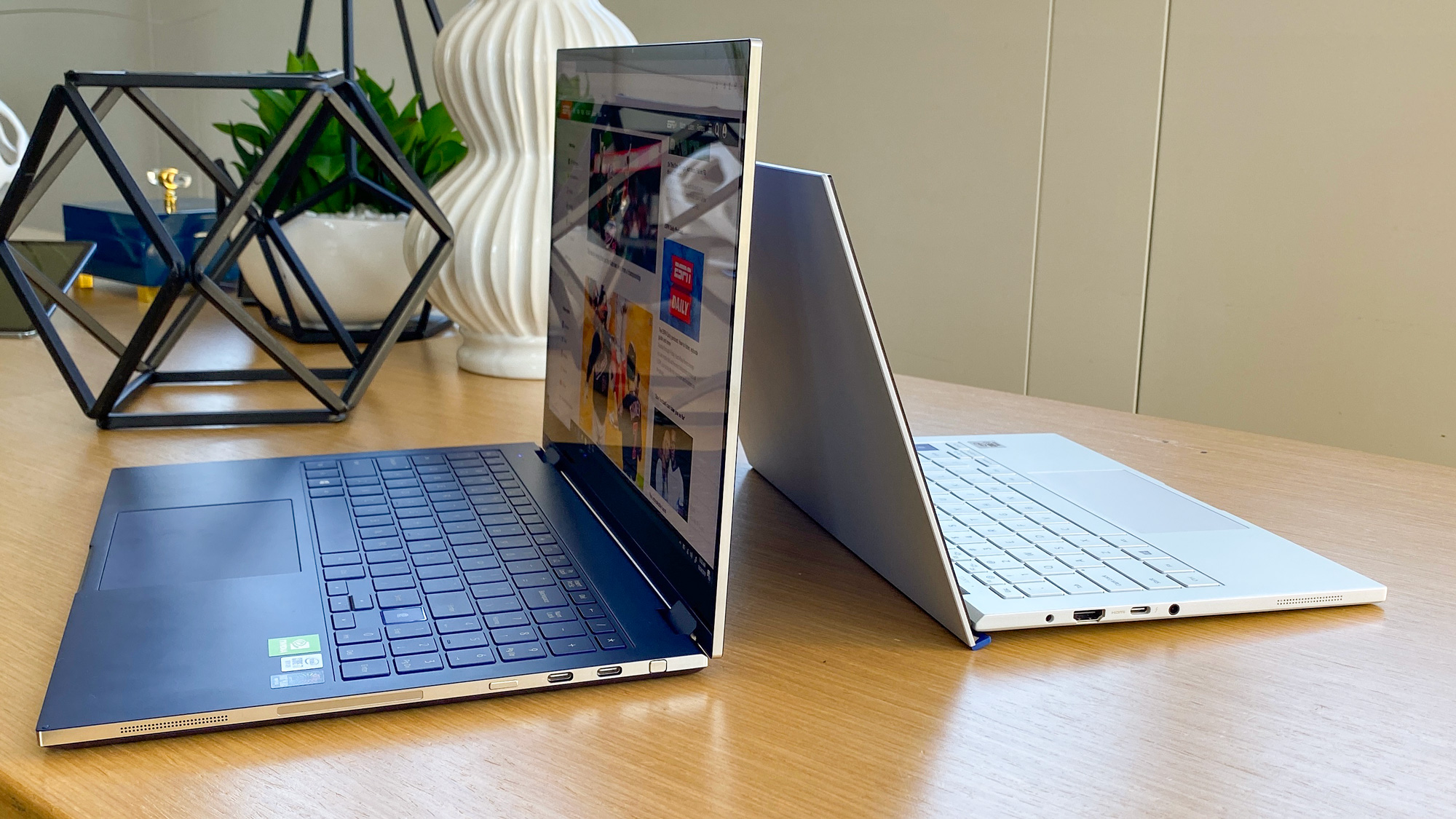Samsung Unveils First QLED Laptops with Galaxy Book Flex, Ion
Samsung is making more laptops I guess

Samsung is launching two new laptops slated to replace its Notebook 9 lineup with its Samsung Galaxy Book Ion (clamshell) and the Galaxy Book Flex (2-in-1), which boast Qi-charging touchpads and QLED displays.
There’s no word on pricing and availability yet, so stay tuned.
Samsung Galaxy Book Ion/Flex specs
There are 13-inch and 15-inch versions of each laptop, so there’s some variety between them.

Both sizes of the Galaxy Book Flex can be configured with up to a 10th Gen Intel Core Ice Lake processor, 16GB of RAM and a 1TB SSD. The only difference is that the 13-inch Flex’s GPU is stuck with either Intel Iris Plus Graphics or Intel UHD Graphics, while the 15-inch can be configured with an Nvidia GeForce MX250 GPU.
Meanwhile, the Galaxy Book Ion can be outfitted with a 10th Gen Intel Core Comet Lake CPU, 16GB of RAM and a 1TB SSD. However, the 15-inch version gets plus 1 SO-DIMM on RAM, plus 1 SSD expandable slot and also has the option for an MX250 GPU, whereas the 13-inch model is stuck with Intel UHD Graphics.
Samsung Galaxy Book Ion/Flex design
As stated earlier, the Galaxy Book Flex is designed to be a 2-in-1 laptop, while the Ion takes a simple clamshell approach. You’ll be able to customize the Flex with either a Royal Blue or Silver design, but the Ion is stuck with only silver. However, Samsung’s “Silver” looked white in person, which is better than plain old silver.

The Flex also has a slightly more premium build, considering it’s made out of aluminum and it has a slottable S Pen, and the Ion’s chassis is simply made from magnesium. However, interestingly enough, Samsung decided to outfit a Qi-charging trackpad on both systems. It seems almost useless when you’re using your system as a laptop, but if you’re hooked up to a monitor and have a separate keyboard, it’ll work.
Sign up to receive The Snapshot, a free special dispatch from Laptop Mag, in your inbox.
The 13-inch Flex (2.2 pounds, 11.9 x 8.0 x 0.5 inches), 15-inch Flex (3.4 pounds, 14 x 8.9 x 0.6 inches), 13-inch Ion (2.1 pounds, 12 x 7.9 x 0.5 inches) and 15-inch Ion (2.6 pounds, 14 x 9 x 0.6 inches) are all relatively slim and light.

In terms of ports, the Flex will boast two Thunderbolt 3 ports, one USB Type-C port, a microSD card slot and a headphone jack, while the Ion will have just one Thunderbolt 3 port, two USB 3.0 ports, an HDMI port, a microSD card slot and a headphone jack.
Samsung Galaxy Book Ion/Flex display and audio
Samsung is outfitting the Flex and Ion with its famous QLED displays. Both systems with have a 1920 x 1080 panel, at either 13.3 inches or 15.6 inches depending on the model, and they will apparently hit 600 nits of brightness in Outdoors mode, which is a setting that can be manually enabled.

When we saw the Flex in person, the forest on the display popped compared to the Notebook 9 Pen, which wasn’t as vivid or bright. The same tiger came across both screens, and it's orange fur and black stripes looked realtistic on the QLED screen, while they were significantly duller on the Notebook 9’s panel.
The company is also throwing in AKG audio in the Galaxy Book Ion and Flex, which is one of Samsung’s audio electronics divisions.
Samsung Galaxy Book Ion/Flex battery life
Samsung claims that both systems will be able to get up to 20 hours of battery life, which is a rather lofty claim, considering the recent Notebook 9 Pro we reviewed clocked in at 8:53, which isn’t bad, but nowhere near what the company is claiming. We’ll see how the battery life rocks when we put it to our battery test.
Outlook
Getting to test the Samsung Galaxy Book Ion’s and Flex’s QLED displays more thoroughly is exciting, and if Samsung’s battery life claims actually live up to the crazy 20 hours, then this will be a pair of laptops for the ages. However, we’re still a little skeptical, given Samsung’s history making laptops. Stay tuned for our full reviews and benchmarks of the Galaxy Book Ion and Flex.

Rami Tabari is the Reviews Editor for Laptop Mag. He reviews every shape and form of a laptop as well as all sorts of cool tech. You can find him sitting at his desk surrounded by a hoarder's dream of laptops, and when he navigates his way out to civilization, you can catch him watching really bad anime or playing some kind of painfully difficult game. He’s the best at every game and he just doesn’t lose. That’s why you’ll occasionally catch his byline attached to the latest Souls-like challenge.
